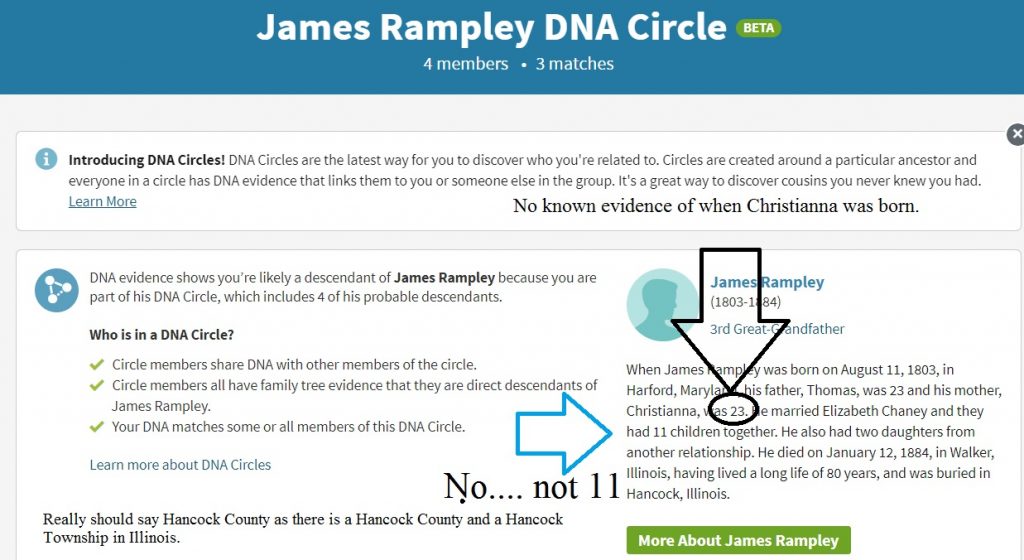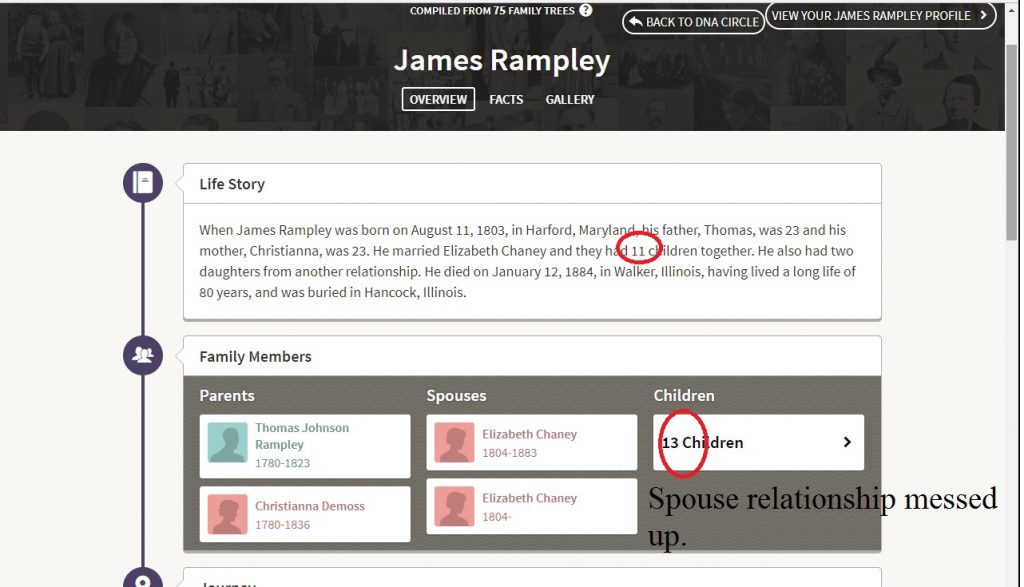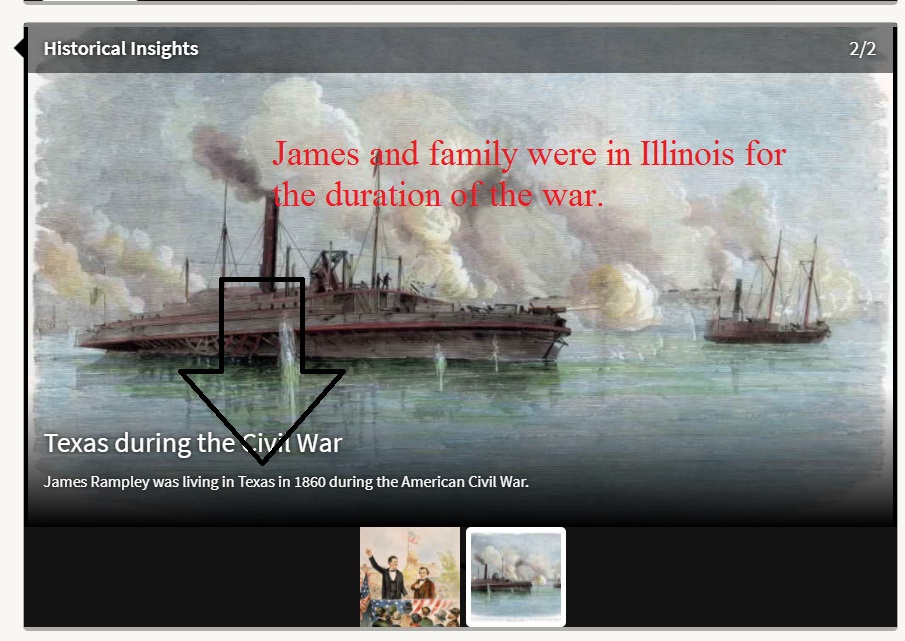One example is anecdotal and does not always prove as much as we would like, but in this case it does make the point that the compiled trees on the AncestryDNA circles are, well, suspect.
The “James Rampley DNA Circle” indicates that his mother’s year of birth is known: it is not.

It is indicated that James had 11 or 13 children with Elizabeth Chaney. He did marry Elizabeth Chaney–they did not have anywhere near 13 children.

There is absolutely no evidence that James and his family were ever in Texas during the Civil War as this page on James states. They were enumerated in the 1860 census in Hancock County, Illinois, still owned property there (not direct proof of residence admittedly), paid property taxes there (not direct proof of residence, either), all three sons who enlisted in the US Civil War were Illinois residents at the time. I’m not certain where this little residential detail came from.

As I’ve mentioned in earlier posts, the AncestryDNA circles are helpful for sorting matches. But I just wish that Ancestry would not tie unsubstantiated compilations from user-submitted trees to their DNA results. DNA is supposed to be irrefutable–we’ve all heard “DNA doesn’t lie.” DNA does bring out the secrets no one wanted to tell you. DNA is science–based on sound research, evidence, and analysis. You can algorithmically determine if two individuals are related based upon their DNA. It’s essentially a matter of a computation.
And that’s where these algorithmically created compilations fail.
You can’t just take a bunch of compilations on one dead person and algorithmically create a summary on that dead person that is correct. Genealogical research is a little more nuanced than that.
Keep the circles. Throw out the compilations. It’s hard enough to fight this stuff without Ancestry.com generating more of it and the appearance of it on the DNA pages makes it seem more credible to some researchers.
After all, you can’t argue with DNA.
But you sure as hell can argue with the ancestral compilations on the AncestryDNA circles.

6 Responses
You are looking at a life story that ancestry made from one family tree. It’s no different than looking at that same tree but only reading the “facts” the owner has entered. I have that “feature” turned off for my trees because I can write a better story than ancestry does.
Yes. This “life story” comes not from my tree, but is compiled from all the trees that mention this person.
I found multiple “Richard E. Rice” ‘s. Even checking FamSearch to get their “Unique” ID#’s to “perhaps” find a frame-of-reference gave me 16 Richard E Rice ‘s and even three “Richard Earl Rice ‘s” which is correct full name of my bio-father’s brother. With the pulling up of names from “unproven” trees, there mathematically have to be at least 15 errors times how many???
My copy of the Marshfield News-Herald newspaper July 2017, in the middle of Wisconsin, shows the 28 December 1946 marriage in Mattoon IL, of Mary Jean Williams (no maiden name given) to Gail H. Williams M.D. He died 1992. Both? buried Dodge Grove Cemetery Mattoon, Illinois. Curious if you have a connection…
I have no known connection to this couple. Thanks for posting.
Thanks, Michael, for passing your concerns to Ancestry.com. You are absolutely correct about these compilations. I have seen some seriously crazy things in these compilations. One couple had over 50 children!!!!! Of course, it was the same children’s names repeated over and over with different dates. Or, the one that has the family in 2 different countries at the same time. It will just confuse the newbies more than they already are. An awful lot of trees have no source information at all, so how can you know if it is factual?